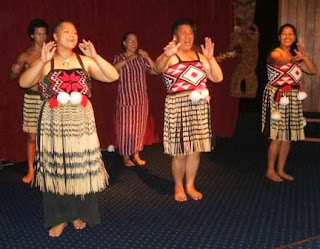The five women wears for working are inspired from Philippine Sleeve and textile of Egypt.
BESTFIND
Wednesday, December 4, 2013
Philipine:
Man’s Top (Barong Tagalog) collarless shirt, often wears
hat called Salakot
Women’s
skirt- Barot’ Saya ( blouse, shirt,
skirt)
The revolution of Philippine top from late 1960s-1970s
Architectural butterfly sleeves, the traditional "baro't saya" was worn by
upper class and for special occasions in the Philippines during the latter 19th
and early 20th century
Men: A
traditional garment for men is the barong tagalog (pronounced BAH-rong tah-GAH-lawg), an embroidered outer shirt, worn
untucked.
It has collars, long
sleeves and
mid-thigh horizontal hemline with side slits. It is made from pina (pineapple fibers), jusi
(raw silk) or ramie (grass fibers).
Women: Women wear the heavily starched, butterfly-sleeved terno (pronounced tee-AIR-no) and a matching long skirt on formal occasions.
Muslims: The various Muslim groups in the south and the mountain tribes have their own distinctive garments. The Maranao Muslims of southern Mindanao, for instance, have the colorful malong. It is a large cloth wrapped around the body and is worn by both men and women.
Women: Women wear the heavily starched, butterfly-sleeved terno (pronounced tee-AIR-no) and a matching long skirt on formal occasions.
Muslims: The various Muslim groups in the south and the mountain tribes have their own distinctive garments. The Maranao Muslims of southern Mindanao, for instance, have the colorful malong. It is a large cloth wrapped around the body and is worn by both men and women.
Tuesday, December 3, 2013
Egypt:
Panama:
DECORATION AND COLORING
decorated all over with woven or printed patterns, decoration in the main was
confined to accessories such as the head-dress, collar, and girdle, these
being often painted, embroidered, beaded, or jeweled
variations of the hues of red, blue, green,
yellow, and deep purple described.
* Ancient Egyptian Priestess:
Over the dress, women had a choice of wearing shawls,
capes, or robes. The shawl was a piece of cloth around 4 feet wide by 13 or 14
feet long. This was mostly
worn pleated as well
Panama:
A Pollera is a Spanish term for a big
one-piece skirt used mostly in
traditional festivities and folklore throughout Spanish-speaking Latin America. Polleras are made from
different materials, such as cotton or wool and tend to have colorful
decorations. Most of the decorations are embroidered, flowers and regional
animals are among the most common designs found in Polleras. Polleras are a form of
Spanish colonial dress enforced sometime between the 16th and 17th centuries on
indigenous populations in the Andes by hacienda owners or haciendas. Traditional Pollera's come from peasant
dress from Southern Spanish regions, like Andalucía. Today, Polleras are associated with
indigenous and folkloric forms of dress.
- Sampot: Chang Kben, Phamuong, Hol, Tep Apsara, Samloy, Chorabap, Sang, Seai Sua, Lberk, and Alorgn
- Top: Chang Pong, Av Bumpong, Av Dai Puon, Av Pnot Kbach, Av Neang Nov, Av Bar Bov, Av Pak, and Krama.
China: one status in society, each social class had a different sense of fashion.
- Men: Black cotton shoes (poor), Black Leather shoes(rich) for formal occasion
- Women: Bright coated "Lotus shoes"
* Civil and Military officials: Mandarin Square or Rank Badge.
* Qing Dynasty (1644-1911) and Republican Era
* Early People 's Republic
Portugal:
The Portuguese have a strong link the to Spanish
culture. The traditional clothing is bold and colorful with long skirts for the
women. The traditional wedding dress is called the A Noiva. It is a long black
dress with a white headdress and large gold necklaces. For other religious
festivals the headdresses can be red as well. Another traditional costumes is
for bagpipe dancers. The bagpipe players were trousers and folk costumes but
the male dancers wear skirts.
Black or dark colors are for everyday wear while
colorful clothing are for special occasions.
Malta:
The material used for such garments was generally cotton
or wool normally
homespun and hand-dyed.
The material used for such garments was generally cotton
or wool normally
homespun and hand-dyed.
New Zealand:
Maoris
generally dress like other New Zealanders, but still wear their traditional
costumes for special occasions. The most distinctive feature of these costumes
is the striped, fringed skirt woven from flax that is worn by both men and
women. Women wear them over brightly colored dresses. Over their dresses the
women may also wear long white capes decorated with black fringes.
Norway:
The Bunad is a traditional Norwegian costume worn by both men and
women.
It inspire from rural traditions or have a more modern design inspired by historical patterns and cuts
Traditionally Bunads represented the family home and the area
people came from but
now in the modern world where moving from place to place is a necessity
Today the Bunad is worn for celebrations and special occasions.
During the wedding season (May-June), you often see Norwegians dressed in their Bunads on Saturdays walking
to and from Churches
Bunads are very expensive. Traditionally Bunads use hand-made gold
and silver jewellery to decorate
The normal fabric of a Bunad dress or coat is wool
Shirts are made from either linen or cotton, and
shawls and aprons are normally wool or silk.
Subscribe to:
Comments (Atom)











































.jpg)













